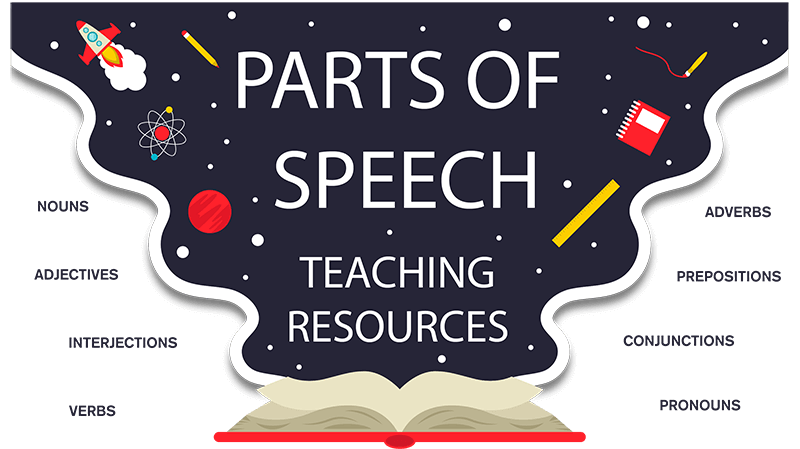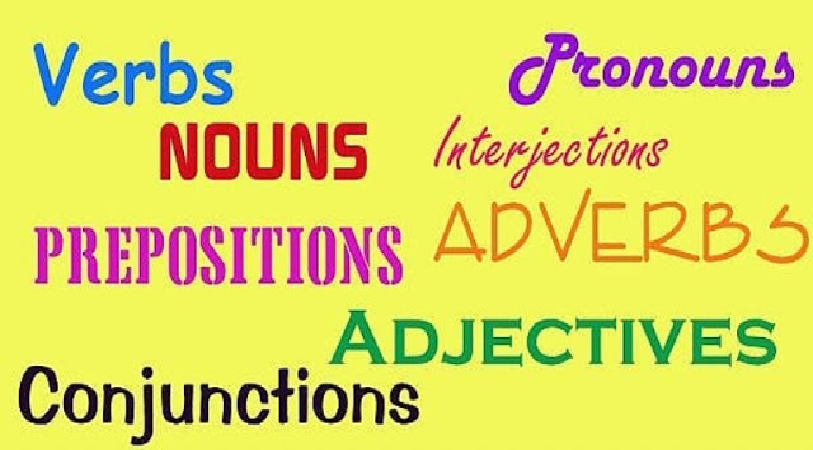Những ai đã và đang học tiếng Anh chắc hẳn đều nghe qua về từ loại chuyển đổi. Cách chuyển đổi từ loại trong tiếng Anh là một trong những nội dung quan trọng của ngữ pháp khi bạn học loại ngôn ngữ này. Trong bài viết này, ieltscaptoc.com.vn xin giới thiệu đến các bạn Bảng chuyển đổi từ loại trong tiếng Anh và có bài tập về từ loại có đáp án để các bạn tham khảo.
Nội dung chính
1. Bảng từ loại trong tiếng Anh
Nói một cách đơn giản, chuyển đổi từ loại tiếng Anh có nghĩa là chuyển đổi từ từ loại này sang từ loại khác. Được thể hiện bằng một số quy tắc chuyển đổi nhất định. Nếu như ở trong tiếng Việt, danh từ – động từ – tính từ là những từ hoàn toàn khác biệt. Hay thậm chí có những lúc danh từ cũng chính là tính từ và là động từ.

Thực tế trong tiếng Anh cũng có những trường hợp một từ mang nhiều ý nghĩa từ loại tùy từng ngữ cảnh câu văn. Tuy nhiên trong phạm vi bài viết này, chúng ta sẽ chỉ đề cập đến việc chuyển đổi từ theo những quy tắc nhất định.
Có 8 từ loại trong tiếng Anh
- Danh từ (Nouns): Là từ gọi tên người, đồ vật, sự việc hay nơi chốn.
Ex: teacher, desk, sweetness, city.
- Đại từ (Pronouns): Là từ dùng thay cho danh từ để không phải dùng lại danh từ ấy nhiều lần.
Ex: I, you, them, who, that, himself, someone.
- Tính từ (Adjectives): Là từ cung cấp tính chất cho danh từ, làm cho danh từ rõ nghĩa hơn, chính xác và đầy đủ hơn.
Ex: a dirty hand, a new dress, the car is new.
- Động từ (Verbs): Là từ diễn tả một hành động, một tình trạng hay một cảm xúc. Nó xác định chủ từ làm hay chịu đựng một điều gì.
Ex: The boy played football. He is hungry. The cake was cut.
- Trạng từ (Adverbs): Là từ bổ sung ý nghĩa cho một động từ, một tính từ hay một trạng từ khác. Tương tự như tính từ, nó làm cho các từ mà nó bổ nghĩa rõ ràng, đầy đủ và chính xác hơn.
Ex: He ran quickly. I saw him yesterday. It is very large.
- Giới từ (Prepositions): Là từ thường dùng với danh từ và đại từ hay chỉ mối tương quan giữa các từ này với những từ khác, thường là nhằm diễn tả mối tương quan về hoàn cảnh, thời gian hay vị trí.
Ex: It went by airmail. The desk was near the window.
- Liên từ (Conjunctions): Là từ nối các từ (words), ngữ (phrases) hay câu (sentences) lại với nhau.
Ex: Peter and Bill are students. He worked hard because he wanted to succeed.
- Thán từ (Interjections): Là từ diễn tả tình cảm hay cảm xúc đột ngột, không ngờ. Các từ loại này không can thiệp vào cú pháp của câu.
Ex: Hello! Oh! Ah!
Có một điều quan trọng mà người học tiếng Anh cần biết là cách xếp loại trên đây căn cứ vào chức năng ngữ pháp mà một từ đảm nhiệm trong câu. Vì thế, có rất nhiều từ đảm nhiệm nhiều loại chức năng khác nhau và do đó, có thể được xếp vào nhiều từ loại khác nhau.
Xét các câu dưới đây
(1) He came by a very fast train.
Anh ta đến bằng một chuyến xe lửa cực nhanh.
(2) Bill ran very fast.
Bill chạy rất nhanh.
(3) They are going to fast for three days; during that time they won’t eat anything.
Họ sắp nhịn ăn trong ba ngày; trong thời gian ấy họ sẽ không ăn gì cả.
(4) At the end of his three-day fast, he will have a very light meal.
Vào cuối đợt ăn chay dài ba ngày của anh ta, anh ta sẽ dùng một bữa ăn thật nhẹ.
- Trong câu (1) fast là một tính từ (adjective).
- Trong câu (2) fast là một trạng từ (adverb).
- Trong câu (3) fast là một động từ (verb).
- Trong câu (4) fast là một danh từ (noun).
2. Cách nhận biết theo đuôi của danh từ, động từ, tính từ và trạng từ trong tiếng Anh
Từ loại là những loại từ cơ bản của tiếng Anh. Khi nắm vững về các từ loại trong tiếng Anh, các bạn mới có thể tránh nhầm lẫn trong việc sử dụng câu nói. Đặc biệt hơn nữa, nắm chắc về từ vựng, các bạn có thể giúp các bạn đạt điểm cao hơn trong kỳ thi TOEIC, TOEFL hoặc IELTS.

2.1. Noun endings (Dấu hiệu nhận biết danh từ)
| Noun Endings | Examples |
| 1. – ism | criticism, heroism, patriotism |
| 2. – nce | importance, significance, dependence, resistance |
| 3. – ness | bitterness, darkness, hardness |
| 4. – ion | pollution, suggestion, action |
| 5. – ment | accomplishment, commencement, enhancement, excitement |
| 6- —(i)ty | purity, authority, majority, superiority, humidity, cruelty, honesty, plenty, safety |
| 7. – age | baggage, carriage, damage, language, luggage, marriage, passage |
| 8. – ship | citizenship, fellowship, scholarship, friendship, hardship |
| 9. – th | bath, birth, death, growth, health, length, strength, truth, depth, breadth, wealth |
| 10. – dom | freedom, kingdom, wisdom |
| 11. – hood | childhood, brotherhood, neighborhood, likelihood |
| 12. – ure | closure, legislature, nature, failure, pleasure |
| 13. – cy | bankruptcy, democracy, accuracy, expectancy, efficiency |
| 14. —(t)ry | rivalry, ancestry, carpentry, machinery, scenery, bravery |
| 15. – logy | archaeology, geology, sociology, zoology |
| 16. – graphy | bibliography, biography |
| 17. – or | actor, creator, doctor, tailor, visitor, bachelor |
| 18. – er | northerner, villager, airliner, sorcerer |
| 19. – ee | employee, payee, absentee, refugee |
| 20. – ist | economist, dentist, pianist, optimist, perfectionist |
| 21. – ician | magician, physician, musician, electrician, beautician |
| 22. – ant | assistant, accountant, consultant, contestant, inhabitant |
Xem thêm những bài viết đáng chú ý
- Tổng hợp những cấu trúc tiếng Anh nâng cao ít ai biết
- Tải Ebook Model Essays For IELTS Writing mới nhất 2021
- Tải trọn bộ 4 quyển How to prepare for IELTS mới nhất
2.2. Adjective endings (Dấu hiệu nhận biết tính từ)
| Adj endings | Examples |
| l. – ent | independent, sufficient, absent, ancient, apparent, ardent |
| 2. – ant | arrogant, expectant, important, significant, abundant, ignorant, brilliant |
| 3. – ful | beautiful, graceful, powerful, grateful, forgetful, doubtful |
| 4. – less | doubtless, fearless, powerless, countless, careless, helpless |
| 5. – ic | civic, classic, historic, artistic, economic |
| 6. – ive | authoritative, demonstrative, passive, comparative, possessive, native |
| 7. – ous | dangerous, glorious, murderous, viscous, ferocious, hilarious |
| 8. – able | charitable, separable, bearable, reliable, comfortable, suitable |
| 9. – ible | audible, edible, horrible, terrible |
| 10. – al | central, general, oral, tropical, economical |
| ll. – ory | mandatory, compulsory, predatory, satisfactory |
| 12. – ary | arbitrary, budgetary, contrary, primary, temporary, necessary |
| 13. – y | angry, happy, icy, messy, milky, tidy, chilly, slippery, rainy |
| 14. – ly | friendly, lovely, lively, daily, manly, beastly, cowardly, queenly, rascally |
| 15. – ate | temperate, accurate, considerate, immediate, literate |
| 16. – ish | foolish, childish, bookish, feverish, reddish |
2.3. Verb endings (Dấu hiệu nhận biết động từ)
| Verb endings | Examples |
| l. – en/en- | listen, happen, strengthen, lengthen, shorten, soften, widen, entrust, enslave, enlarge, encourage, enable, enrich |
| 2. – ate | assassinate, associate, fascinate, separate, vaccinate, evacuate |
| 3. – ize | idolize, apologize, sympathize, authorize, fertilize |
| 4. – ify | satisfy, solidify, horrify |
2.4. Adverb endings (Dấu hiệu nhận biết trạng từ)
| Adverb endings | Examples |
| l. – ly | firstly, fully, greatly, happily, hourly |
| 2. – wise | otherwise, clockwise |
| 3. – ward | backward, inward, onward, eastward |
3. Cách chuyển đổi từ loại trong tiếng Anh
Cách chuyển đổi từ loại trong tiếng Anh là một phần vô cùng quan trọng. sử dụng tiền tố để chuyển từ tính từ và danh từ sang động từ hoặc sử dụng hậu tố để chuyển đổi tính từ sang danh từ hoặc động từ sang danh từ, tính từ sang trạng từ. Chúng ta phải dựa vào vị trí của từ trong câu để chuyển từ loại đó cho phù hợp

3.1. Cách thành lập danh từ
| Cách thành lập | Cấu trúc | Ví dụ |
| 1. Thêm hậu tố vào sau động từ | V + – tion/-ation | prevent => prevention introduce => introduction invent => invention conserve => conservation admire => admiration |
| V + -ment | Develop => development achieve => achievement employ => employment disappoint => disappointment improve => improvement | |
| V + – er/-or | drive => driver teach => teacher edit => editor instruct => instructor dry => dryer cook => cooker | |
| V + – ar/- ant/-ee (chỉ người) | beg => beggar assist => assistant examine => examinee lie => liar employ => employee | |
| V + – ence/- ance | exist => existence differ => difference attend => attendance appear => appearance | |
| V + – ing | teach => teaching build => building understand => understanding | |
| V + – age | drain => drainage use => usage | |
| 2. Thêm hậu tố vào sau danh từ | N + -ship | friend => friendship owner => ownership |
| N + – ism (chủ nghĩa/học thuyết) | capital => capitalism hero => heroism | |
| 3. Thêm hậu tố vào sau tính từ | Adj + – ity | possible => possibility real => reality national => nationality special => speciality |
| Adj + – ism | racial => racialism (chủ nghĩa phân biệt chủng tộc) common => communism (chủ nghĩa cộng sản) social => socialism (chủ nghĩa xã hội) feudal => feudalism (chế độ phong kiến) surreal => surrealism (chủ nghĩa siêu thực) | |
| Adj + – ness | rich => richness happy => happiness sad => sadness willing => willingness | |
| super – | man => superman market => supermarket star => superstar structure => superstructure store => superstore | |
| under – | current => undercurrent growth => undergrowth education => undereducation pass => underpass weight => underweight | |
| sur – | face => surface name => surname plus => surplus | |
| sub – | way => subway marine => submarine contact => subcontract … |
Ví dụ: Cho dạng đúng của các từ trong ngoặc để điền vào chỗ trống
Detroit is renowned for the _____ production_____ of cars. (produce)
Trong câu có mạo từ xác định “the” nên cần điền một danh từ
Đáp án là: production
Dịch: Detroit rất nổi tiếng về việc sản xuất ô tô.
3.2. Cách thành lập tính từ
Tính từ đơn
| Cách lập tính từ | Noun | Adj |
| Noun + y | Rain | Rainy |
| Wind | Windy | |
| Sun | Sunny | |
| Snow | Snowy | |
| Fog | Foggy | |
| Noun + ly | Day | Daily |
| Man | Manly | |
| Friend | Friendly | |
| Love | Lovely | |
| Noun + ful | Care | Careful |
| Beauty | Beautiful | |
| Harm | Harmful | |
| Noun + less | Care | Careless |
| Home | Homeless | |
| Harm | Harmless | |
| Noun + en | Gold | Golden |
| Wool | Woolen | |
| Wood | Wooden | |
| Noun + some | Trouble | Troublesome |
| Quarrel | quarrelsome | |
| Noun + ish | Book | Bookish |
| Girl | Girlish | |
| Child | Childish | |
| Noun + ous | Humour | Humourous |
| Danger | Dangerous |
Tính từ ghép
| Cách lập tính từ ghép | Examples |
| Adj + adj | a dark-blue coat a red-hot iron bar |
| Noun + adjective | a snow-white face the oil-rich country |
| Noun + participle | a horse-drawn cart a heart-breaking story |
| Adjective + participle | ready-made shirt a good-looking girl |
| Adverb + participle | a newly-built house a well-dressed man |
| Noun + noun-ed | a tile-roofed house |
| Adjective + noun-ed | a dark-haired girl |
| A group of words | a twenty-year-old girl a twelve-chapter novel an eight-day trip an air-to-air missile |
3.3. Cách thành lập trạng từ
Công thức: Adj + ly = Adv
Ví dụ
- quick → quickly
- slow → slowly
- beautiful → beautifully
- final → finally
- immediate → immediately
Lưu ý 1: Các tính từ tận cùng bằng able / ible thì bỏ e ở cuối và thêm y
Ví dụ
- capable → capably
- probable → probably
- possible → possibly
Lưu ý 2: Âm cuối y đổi thành i
Ví dụ
- happy → happily
- easy → easily
- lucky → luckily
Những trường hợp ngoại lệ
- Friendly (adj): là tính từ và không có hình thức trạng từ. Để có trạng từ tương tự, ta có thể dùng cụm trạng từ in a friendly way.
Ví dụ: He is friendly.
He greeted me in a friendly way.
- Hard vừa là tính từ vừa là trạng từ
Ví dụ: The exercise is pretty hard. (hard = difficult).
She works hard. (hard: adv) = She is a hard-working worker. (hard: adj)
- Late: vừa là tính từ vừa là trạng từ:
Ví dụ: He was late. (adj)
He came late. (adv)
- Một số từ khác vừa là adj, vừa là adv: early, well, fast, high
Ví dụ
I’m very well today. (adj)
She learns very well. (adv)
This table is high. (adj)
The plane flies high. (adv)
- Highly cũng là trạng từ nhưng nghĩa khác với high (adv).
Ví dụ: He is highly paid. = He is a highly – paid employee
3.4. Cách thành lập động từ V-ed và V-ing

Cách thêm – ed sau động từ
Những cách thức thêm – ed sau đây được dùng để thành lập thì quá khứ đơn (simple past) và quá khứ phân từ (past participle):
- Thông thường: thêm ed vào động từ nguyên mẫu.
Ví dụ: To talk –> she talked about her family last night.
- Động từ tận cùng bằng e –> chỉ thêm d.
Ví dụ: To live –> he lived in Hanoi for 2 years.
- Động từ tận cùng bằng phụ âm + y –> đổi y thành ied.
Ví dụ: To study –> they studied in the library last weekend.
- Động từ một âm tiết tận cùng bằng 1 nguyên âm + 1 phụ âm và động từ được nhấn mạnh (stressed) ở âm tiết cuối –> gấp đôi phụ âm cuối trước khi thêm ed.
Ví dụ: To stop –> stopped
To control –> controlled
- Một số động từ 2 âm tiết, tận cùng bằng l, được nhấn mạnh (stressed) ở âm tiết thứ nhất cũng gấp đôi phụ âm cuối trước khi thêm ed.
Ví dụ: To travel –> traveled
To kidnap –> kidnapped
To worship –> worshipped
Cách phát âm v-ed
Có tới 3 cách để phát âm từ có -ed tận cùng
- /id/: sau các âm /t/ và /d/
Ví dụ: wanted /’wɔntid/: yêu cầu
decided /di’saidid/: quyết định
- /t/: sau các phụ âm câm (voiceless consonant sounds)
Ví dụ: asked /ɑ:skt/: hỏi
finished /’finiʃt/: kết thúc
- /d/: sau các nguyên âm (vowel sounds) và phụ âm tỏ (voiced consonant sounds)
Ví dụ: answered /’ɑ:nsəd/: trả lời
opened /’oupənd/: mở cửa
Cách thêm -ing sau động từ
V-ing được hình thành để tạo nên hiện tại phân từ (present participle), trong các thì tiếp diễn (continuous tenses) và để tạo thành động danh từ (gerund). Có 6 trường hợp thêm ing:
- Thông thường: thêm -ing và cuối động từ nguyên mẫu.
Ví dụ: To walk –> walking
To do –> doing
- Động từ tận cùng bằng e –> bỏ e trước khi thêm -ing
Ví dụ: To live –> living
To love –> loving
- Động từ tận cùng bằng -ie –> đổi thành -y trước khi thêm -ing.
Ví dụ: To die –> dying
To lie –> lying
- Động từ một âm tiết tận cùng bằng 1 nguyên âm + 1 phụ âm và động từ được nhấn mạnh (stressed) ở âm tiết cuối –> gấp đôi phụ âm cuối trước khi thêm -ing.
Ví dụ: To run –> running
To cut –> cutting
- Một số động từ 2 âm tiết, tận cùng bằng l, được nhấn mạnh (stressed) ở âm tiết thứ nhất cũng gấp đôi phụ âm cuối trước khi thêm -ing.
Ví dụ: To travel –> traveling
- Một số động từ có các thêm -ing đặc biệt để tránh nhầm lẫn:
Ví dụ: To dye (nhuộm) –> dyeing Khác với to die (chết) –> dying
To singe (cháy xém) –> singeing Khác với to sing (hát) –> singing
4. Bài tập
Để hiểu rõ hơn về cách chuyển đổi từ loại trong tiếng Anh, ieltscaptoc.com.vn đã tổng hợp cho các bạn những bài tập thông dụng nhất có đáp án để các bạn luyện tập.

Bài tập 1
Luyện tập – Cấu tạo từ và từ loại
1. John cannot make a _______ to get married to Mary or stay single until he can afford a house and a car.
A. Decide
B. Decision
C. Decisive
D. Decisively
2. She often drives very ________ so she rarely causes an accident.
A. Carefully
B. Careful
C. Caring
D. Careless
3. All Sue’s friends and __________ came to her party .
A. Relations
B. Relatives
C. Relationship
D. Related
4. My father studies about life and structure of plants and animals. He is a ……….
A. Biology
B. Biologist
C. Biological
D. Biologically
5. She takes the …….. For running the household.
A. Responsibility
B. Responsible
C. Responsibly
D. Responsiveness.
6. We are a very close-knit family and very ….. Of one another.
A. Supporting
B. Supportive
C. Support
D. Supporter
7. You are old enough to take _______ for what you have done.
A. Responsible
B. Responsibility
C. Responsibly
D. Irresponsible
8. He has been very interested in researching _______ since he was in high school.
A. Biology
B. Biological
C. Biologist
D. Biologically
9. Although they are twins, they have almost the same appearance but they are seldom in __.
A. Agree
B. Agreeable
C. Agreement
D. Agreeably
10. The more _______ and positive you look, the better you will feel.
A. Confide
B. Confident
C. Confidently
D. Confidence
11. My parents will have celebrated 30 years of _______ by next week.
A. Marry
B. Married
C. Marriageable
D. Marriage
12. London is home to people of many _______ cultures.
A. Diverse
B. Diversity
C. Diversify
D. Diversification
13. Some people are concerned with physical ______ when choosing a wife or husband.
A. Attractive
B. Attraction
C.attractiveness
D.attractively
14. Mrs. Pike was so angry that she made a _______ gesture at the driver.
A. Rude
B. Rudeness
C. Rudely
D. Rudest
15. She sent me a _______ letter thanking me for my invitation.
A. Polite
B. Politely
C. Politeness
D. Impoliteness
16. He is unhappy because of his ————–.
A. Deaf
B. Deafen
C. Deafness
D. Deafened
17. His country has ————– climate.
A. Continent
B. Continental
C. Continence
D. Continentally
18. She has a ————– for pink.
A. Prefer
B. Preferential
C. Preferentially
D. Preference
19. Computers are ————– used in schools and universities.
A. Widely
B. Wide
C. Widen
D. Width
20. I sometimes do not feel ————– when I am at a party.
A. Comfort
B. Comfortable
C. Comforted
D. Comfortably
21. English is the language of ————–.
A. Communicative
B. Communication
C. Communicate
D. Communicatively
22. I have to do this job because I have no ————–.
A. Choose
B. Choice
C. Choosing
D. Chosen
23. English is used by pilots to ask for landing ————– in Cairo.
A. Instruct
B. Instructors
C. Instructions
D. Instructive
24. He did some odd jobs at home ————–.
A. Disappointment
B. Disappoint
C. Disappointed
D. Disappointedly
25. Don’t be afraid. This snake is ————–.
A. Harm
B. Harmful
C. Harmless
D. Unharmed
26. During his ————–, his family lived in the United State.
A. Child
B. Childhood
C. Childish
D. Childlike
27. Jack London wrote several ————– novels on an adventure.
A. Interest
B. Interestedly
C. Interesting
D. Interested
28. He failed the final exam because he didn’t make any ————– for it.
A. Prepare
B. Preparation
C. Preparing
D. Prepared
29. The custom was said to be a matter of ————–.
A. Convenient
B. Convenience
C. Conveniently
D. Convene
30. She is ————– in her book.
A. Absorbed
B. Absorbent
C. Absorptive
D. Absorb
31. As she is so ————– with her present job, she has decided to leave.
A. Satisfy
B. Satisfied
C. Satisfying
D. Unsatisfied
Bài tập 2
Mỗi câu sau đây chứa một lỗi sai. Tìm và sửa những lỗi sai.
- Average family size has increased from the Victorian era.
- The riches in Vietnam are becoming richer and richer.
- In 1892, the first long-distance telephone line between Chicago and New York was formally opening.
- Dietitians urge people to eat a banana a day to get potassium enough in their diet.
- Woody Guthrie has written thousands of songs during her lifetime, many of which became classic folk songs.
- The development of transistors madepossible it to reduce the size of many electronic devices.
- My father is a good family man, completely devoted for his wife and kids.
- The price of gold depends on several factor, including supply and demand in relation to the value of the dollar.
- Weather and geographical conditions may determine the type of transportation used in a region.
- Those people were so friend that I didn’t want to say goodbye to them.
Bài tập 3
Chọn từ chính xác để điền vào câu
- They dance the Tango (beautiful / beautifully)
- She planned their trip to Greece very (careful / carefully)
- Jim painted the kitchen very (bad / badly)
- She speaks very (quiet / quietly)
- Turn the stereo down. It’s too (loud / loudly)
- He skipped________ down the road to school. (Happy / happily)
- He drives too (fast / well)
- She knows the road (good / well)
- He plays the guitar (terrible / terribly)
- We’re going camping tomorrow so we have to get up (early /soon)
- Andy doesn’t often work (hard / hardly)
- Sometimes our teacher arrives______for class. (Late / lately)
Đáp án
Đáp án bài tập 1
- B
- A
- B
- B
- A
- B
- B
- A
- C
- B
- D
- C
- B
- A
- A
- C
- B
- D
- A
- B
- B
- B
- C
- D
- C
- B
- C
- B
- B
- A
- D
Đáp án bài tập 2
- from => since
- The riches => The rich
- Opening => opened
- Potassium enough=> enough potassium
- Became => have become/ become
- madepossible it=> made it possible
- for => to
- Factor => factors
- geography=> geographical
- Friend => friendly
Đáp án bài tập 3
- beautiful
- careful
- bad
- quiet
- loud
- happily
- fast
- well
- terrible
- early
- hard
- lately
Trên đây là bảng chuyển đổi từ loại trong tiếng Anh và bài tập nhận biết từ loại trong tiếng Anh. Mời bạn đọc tham khảo thêm nhiều tài liệu ôn tập tiếng Anh cơ bản và nâng cao khác tại ieltsaptoc.com.vn được cập nhập liên tục.

